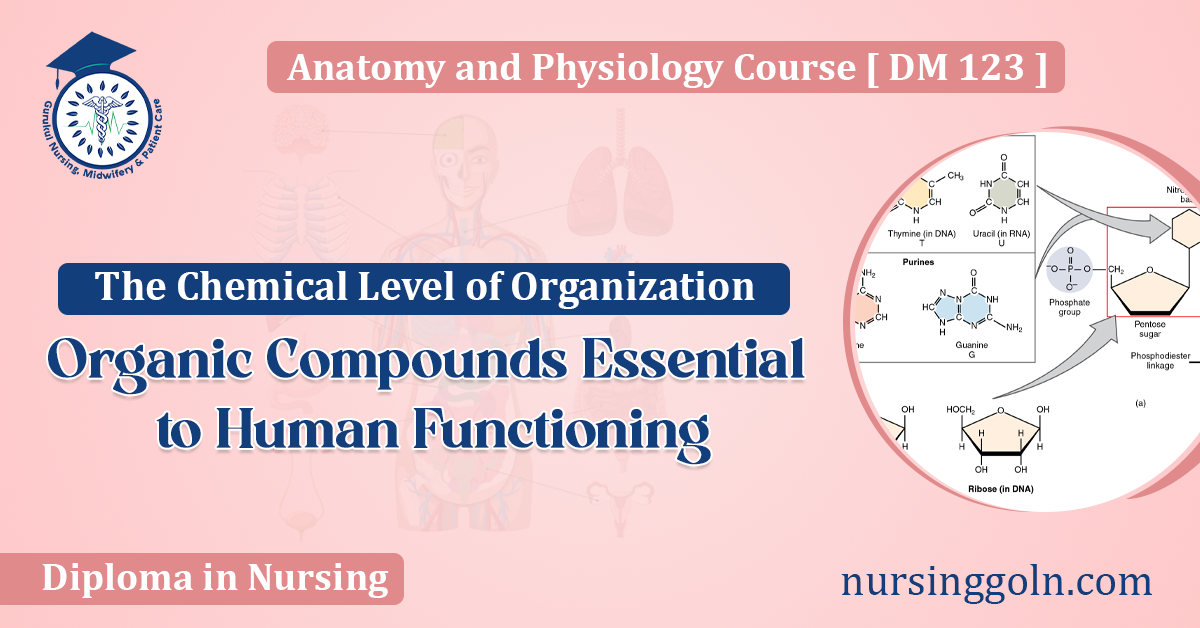When we think about the myriad processes that sustain human life, it’s easy to forget that, at the most fundamental level, we are made of atoms and molecules. The organization of these molecules into complex structures gives rise to the cellular, tissue, organ, and system levels of organization that we more commonly associate with human biology. At the heart of this intricate system lie organic compounds—molecules containing carbon atoms that are the backbone of life as we know it. This article delves deep into the essential organic compounds that enable human functioning.
1. Introduction
Organic compounds form the basis of life on Earth. The term “organic” initially referred to substances derived from living organisms. Today, organic chemistry is the study of carbon-containing compounds, both natural and synthetic. In humans, these compounds play a crucial role in a multitude of biological processes.
2. Carbohydrates
Carbohydrates are one of the most vital energy sources for the human body. They consist primarily of carbon, hydrogen, and oxygen atoms. Based on their molecular size and structure, they can be categorized into three main groups:
- Monosaccharides: These are simple sugars like glucose and fructose. Glucose, in particular, is the primary energy source for our cells.
- Disaccharides: These are composed of two monosaccharides. Examples include sucrose (table sugar) and lactose.
- Polysaccharides: These are complex carbohydrates. Starch (found in plants) and glycogen (stored in our liver and muscles) are examples.
3. Lipids
Lipids are hydrophobic (water-insoluble) molecules that serve several vital functions. They include:
- Triglycerides: These are the main form of fat storage in the human body.
- Phospholipids: Found in the plasma membrane of cells, they form a barrier between the cell and its environment.
- Steroids: Cholesterol, hormones like testosterone and estrogen, and the vitamins D are all steroid molecules.
Lipids, particularly fats, are also crucial energy reserves.
4. Proteins
Proteins are complex molecules formed by amino acids, the building blocks that determine the structure and function of proteins. They play numerous roles:
- Enzymatic activity: Enzymes are proteins that accelerate biochemical reactions.
- Transport: Hemoglobin, for instance, is a protein that carries oxygen in the bloodstream.
- Support: Collagen provides structural support in various tissues.
- Movement: Proteins like actin and myosin enable muscle contraction.
Humans require 20 different amino acids to form the vast array of proteins in the body. While our bodies can produce some of these amino acids, others, known as essential amino acids, must be ingested through our diet.

5. Nucleic Acids
Nucleic acids, namely DNA (deoxyribonucleic acid) and RNA (ribonucleic acid), carry genetic information. They dictate every aspect of our anatomy and physiology.
- DNA: Located in the cell nucleus, DNA contains our genetic code, organized into genes.
- RNA: RNA works alongside DNA in protein synthesis. Types of RNA include messenger RNA (mRNA), ribosomal RNA (rRNA), and transfer RNA (tRNA).
The primary building blocks of nucleic acids are nucleotides, each comprising a sugar, a phosphate group, and a nitrogenous base.
6. Vitamins and Coenzymes
While vitamins are not always counted as one of the main classes of macromolecules, they are crucial organic compounds. They typically function as coenzymes or precursors to coenzymes, facilitating enzymatic reactions. Vitamins can be water-soluble (like Vitamin C) or fat-soluble (like Vitamin D).
7. The Role of Water
Though water is not an organic compound, it’s worth mentioning due to its crucial role in the functioning of organic molecules. It provides a medium for chemical reactions, aids in temperature regulation, and is essential for maintaining cell structure and function.
8. The Balance of Organic Compounds
It’s crucial to maintain a balance of these compounds for optimal health. For instance, while lipids are vital for various functions, an excess can lead to conditions like obesity, increasing the risk for other complications. Similarly, a deficiency or excess of certain vitamins can lead to health issues.
9. Conclusion
Organic compounds, though often overshadowed by discussions of organs and systems, are the unsung heroes of our biological functions. Understanding the chemical level of organization provides insights into how our bodies work, why certain dietary needs exist, and how we can better care for ourselves at the most fundamental level.
At the heart of our being, these intricate systems of molecules come together to perform the dance of life. The carbohydrates, lipids, proteins, nucleic acids, and even the vitamins we consume aren’t just abstract concepts in a biology textbook; they’re the very essence of our existence, enabling the diverse and complex functions that characterize the human experience.
See more:
